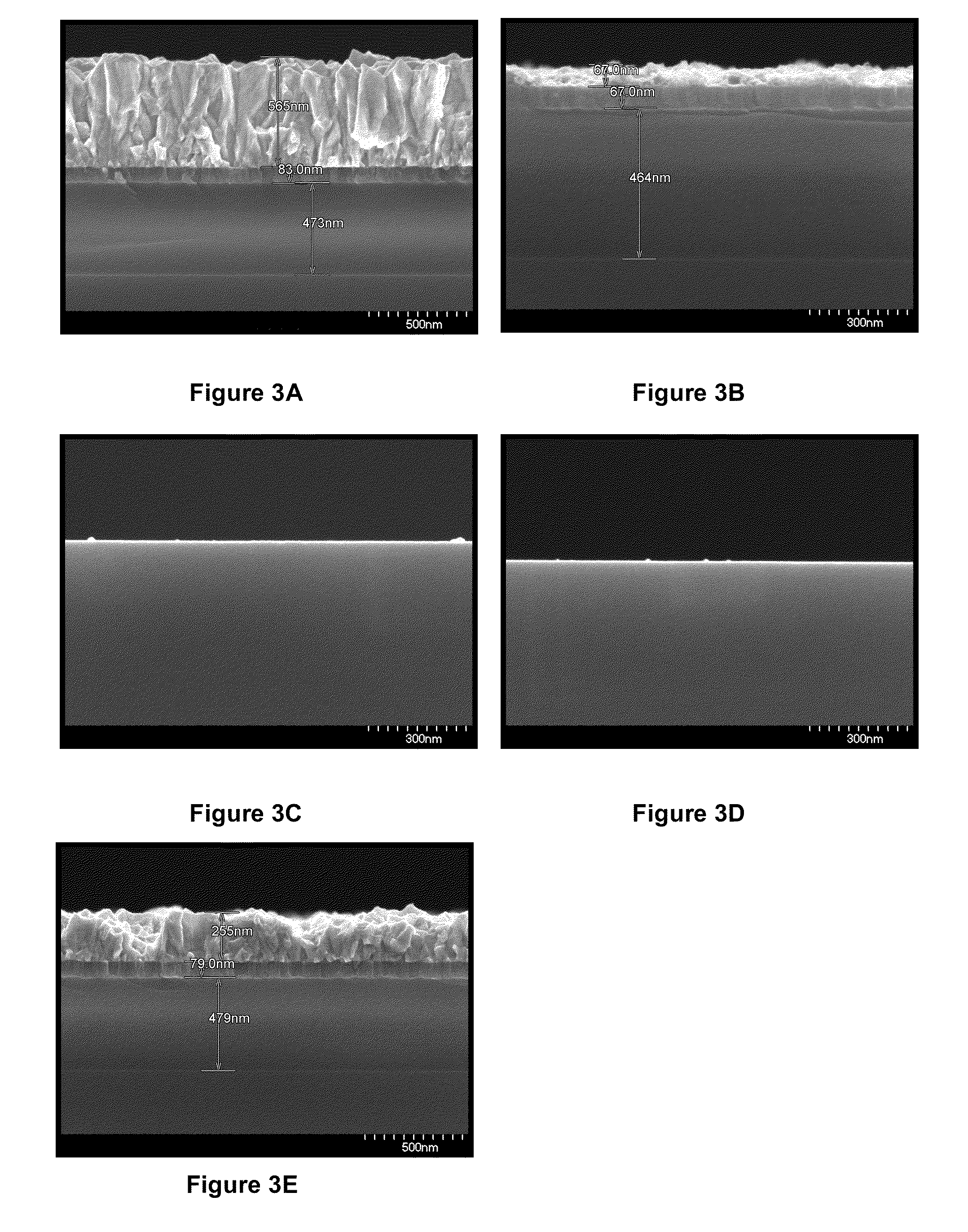Methods for stripping material for wafer reclamation
a technology of stripping material and wafer, applied in the direction of electrical equipment, basic electric elements, chemical instruments and processes, etc., can solve the problems of non-uniform deposition of a layer, processing problems, and the need to scrap microelectronic device wafers, for example silicon semiconductor wafers, to achieve the effect of reducing the number of layers
- Summary
- Abstract
- Description
- Claims
- Application Information
AI Technical Summary
Benefits of technology
Problems solved by technology
Method used
Image
Examples
example 1
[0215]To make the removal compositions compliant with national and international environmental standards, diethylene glycol butyl ether components, which are HAP's, of said removal compositions were substituted with solvents not on the HAP list, specifically propylene glycol, dipropylene glycol, and ethers thereof. Each formulation includes 20.1 wt. % HF, 2.2 wt. % sulfolane, 21.7 wt. % non-HAP list solvent, and 56 wt. % water, based on the total weight of the composition. The compositions are shown below in Table 1 with the specific non-HAP list solvent. In each case, a blanketed wafer including Black Diamond (hereinafter BD, thickness approximately 6,500 Å) or CORAL (thickness approximately 22,000 Å) was immersed in a volume of the composition for 5 min at 50° C. (unless noted otherwise) and visually inspected.
TABLE 1Chemical formulations including non-HAP list organic solventsnon-HAP listorganic solventObservationsdipropylene glycol methyl etherBD: not clean, some residues(formul...
example 2
[0217]It is known that removal compositions including oxidizing agent(s), e.g., H2O2, can be relatively unstable in the presence of certain organic components. Accordingly, it is often necessary to add the oxidizing agent to the remainder of the components at the point of use, which can be inconvenient to the user. As such, oxidizing agents other than H2O2, that will be more stable in the removal compositions of the invention, were experimented with to determine the efficacy of removal of copper having a thickness of 16,000 Å from a blanketed wafer having same thereon, wherein the wafer is immersed in the solutions in Table 2 at room temperature or 40° C. and visually inspected.
TABLE 2Removal of Copper using various oxidizing agentswt. %oxidizing agentin H2OtemperatureobservationsH2O25room tempnot clear after 20 minammonium5room tempclear after 5.5 minpersulfateoxone5room tempclear after 12 minH2O2540° C.not clear after 10 minammonium540° C.clear after 3 minpersulfateoxone540° C.not...
example 3
[0219]Blanketed polysilicon was immersed in the green formulations (G1-G4) of the invention and it was determined that the etch rate of polysilicon in the green formulations was about 0.5 Å min−1 compared to the 0.9 Å min−1 observed with formulation CC (i.e., the non-green formulation). Additionally, it is noted that the COD for the green formulations is about 60 times lower than the COD for formulation CC.
PUM
| Property | Measurement | Unit |
|---|---|---|
| dielectric constant | aaaaa | aaaaa |
| COD | aaaaa | aaaaa |
| COD | aaaaa | aaaaa |
Abstract
Description
Claims
Application Information
 Login to View More
Login to View More - R&D
- Intellectual Property
- Life Sciences
- Materials
- Tech Scout
- Unparalleled Data Quality
- Higher Quality Content
- 60% Fewer Hallucinations
Browse by: Latest US Patents, China's latest patents, Technical Efficacy Thesaurus, Application Domain, Technology Topic, Popular Technical Reports.
© 2025 PatSnap. All rights reserved.Legal|Privacy policy|Modern Slavery Act Transparency Statement|Sitemap|About US| Contact US: help@patsnap.com


